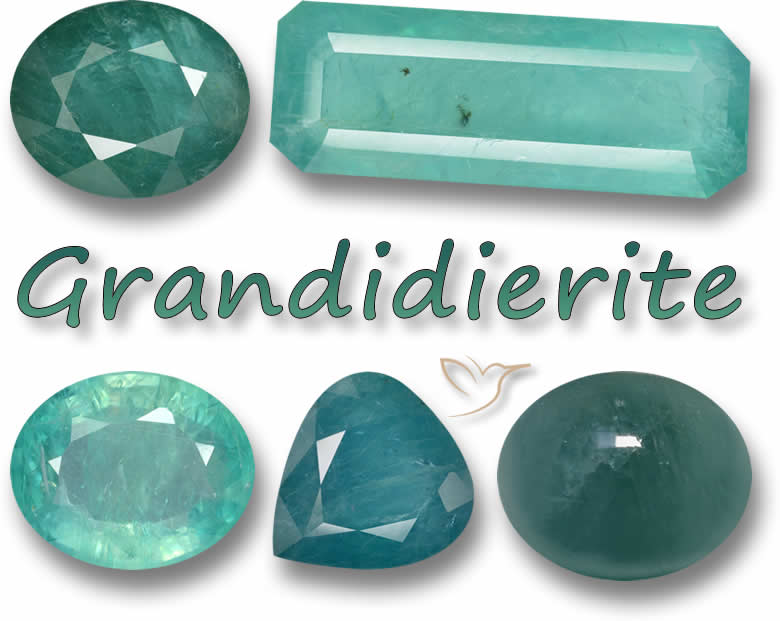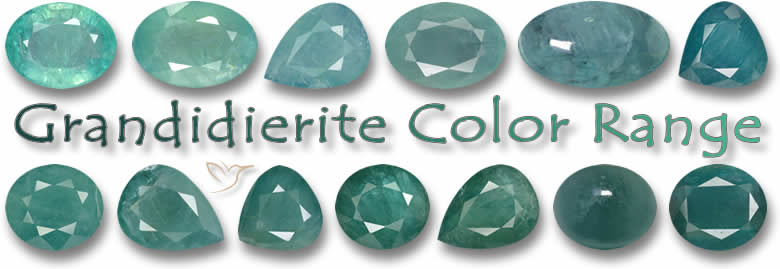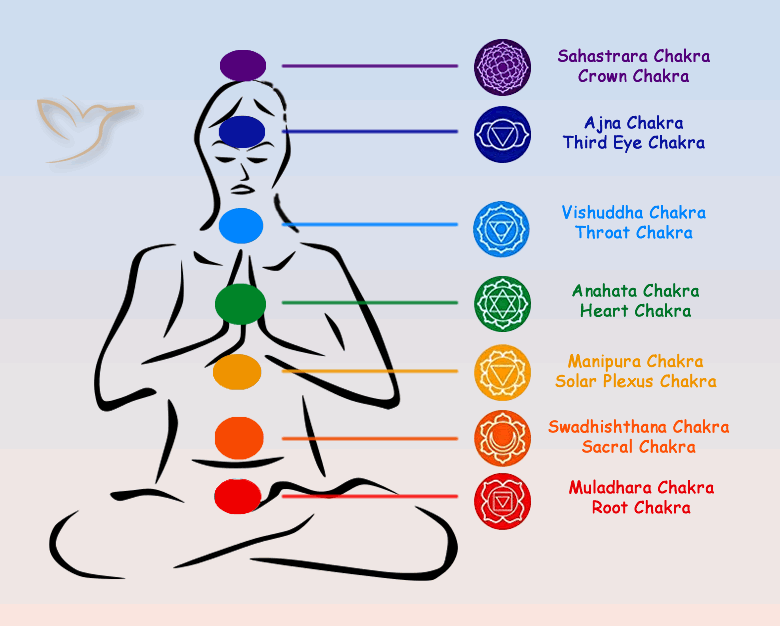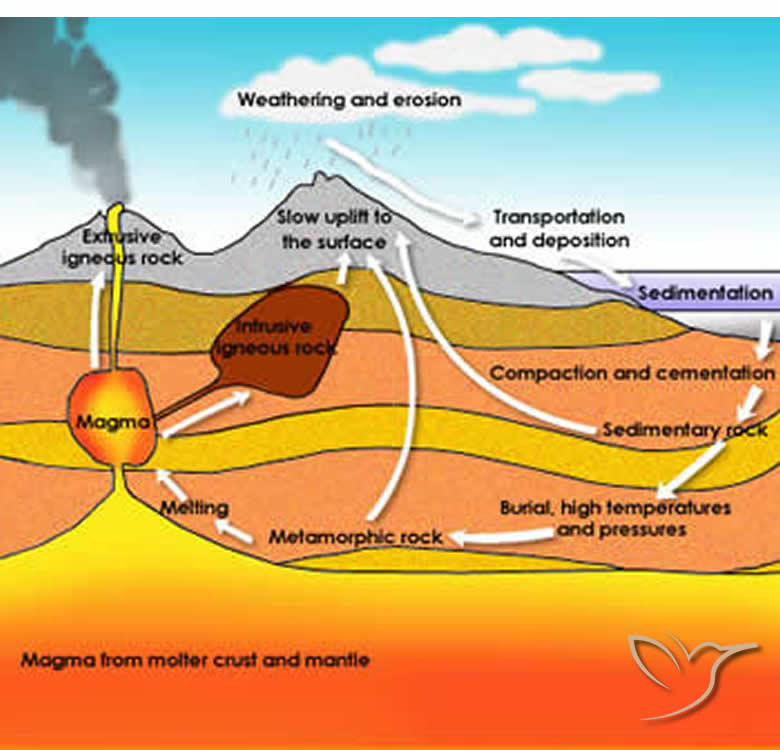Grandidierite Gemstone Information

Introduction
When websites and bloggers discuss the rarest gemstones in the world, Grandidierite usually pops up in their top ten lists. It is commonly a stunning turquoise in color and only really ranges from sky blue to pale green. They are extremely scarce in any form, but transparent specimens - even with visible inclusions or flaws - are almost impossible to find and reach incredible prices.
Grandidierite was first discovered on the fascinating island of Madagascar off the coast of southern Africa.
Isolated for 90 million years, this tropical paradise is home to unique flora and fauna as well as some of the finest gemstone mining sites in the world.
Interestingly, the native population of Madagascar only arrived in the last few thousand years, and they came from South East Asia, not nearby Africa. Perhaps that's why Madagascan gem sellers feel so comfortable here in Thailand, and we're able to access their gorgeous sapphires, rubies, garnets, aquamarine, and yes, some fantastically rare and beautiful Grandidierite gemstones.
Grandidierite Colors

Gemstone-quality Grandidierite only comes in shades of blue and green, with the soft neon blue color the most sought after - though, let's be honest, any color of Grandidierite is very valuable. The color itself is caused by minute traces of iron impurities, and the more iron present, the bluer the gemstone.
Because of its crystal structure, Grandidierite can appear to be two or even three different colors depending on the viewing angle. As you turn it in your hand, it can flash from yellow to green to blue and even colorless in some examples. This unusual phenomenon is called pleochroism and only occurs in a small number of gemstones.
Grandidierite Species
Grandidierite is a silicate mineral made up mostly of magnesium, aluminum, and boron, colored by traces of iron. The natural mineral isn't particularly rare, but translucent specimens good enough for gemstones can be found (still very rare), while transparent examples ready to be faceted are extremely rare and valuable.
Grandidierite Clarity and Cut

Discovering Grandidierite in the ground is difficult enough, but when it's mined, most of the rough is opaque, and the small quantities deemed worthy of becoming gemstones are usually translucent. These are still rare and beautiful when cut and polished into cabochons.
Even rarer are specimens that are at least eye-clean transparent gemstones. In 2014, miners in southern Madagascar struck a vein of Grandidierite that yielded 800 kg of rough material. From this, they were able to glean just 60 g of transparent gemstones!
Once you have a transparent piece of Grandidierite rough, that's only the beginning of the challenge, as cutting and faceting this gemstone is tough. The cutter aims to maximize the pleochroism effect, which flashes two or three colors at different angles, while retaining as much weight as possible. Plus, the gemstone has a tendency to crack in two directions (known as cleavage) if not handled with great care. This is yet another reason anything larger than a carat becomes enormously expensive.
Spiritual Meaning of Grandidierite
Disclaimer: The information provided about the spiritual and healing properties of Grandidierite is for informational purposes only and is not intended as a substitute for professional medical advice. Please consult a healthcare professional for any health concerns.
Since it's a relatively newly discovered gemstone and extremely rare, there's very little known about its spiritual strengths - so be a little wary of too many claims about its powers, especially any 'traditional' energies.
The presence of iron will have some influence, of course, and some say this gemstone gives its owner inner strength, confidence, and aids clear thinking, which ties in with the spiritual power of iron. Further, it can assist in logical thought processes and organization in life and work.
Grandidierite has a more obvious link to the chakras through its distinctive color, as we'll see next.
Grandidierite and the Chakras

Chakras are the energy centers in your body, also referred to as Qi or Prana. There are seven chakras throughout the body, each influencing a particular physical, emotional, or mental state.
The seven chakras are: Crown, Third Eye, Throat, Heart, Solar Plexus, Sacral, and Root. The word Chakra is a Sanskrit term meaning wheel. Each chakra is assigned a color of influence, and a gemstone with a dominant color connects to that chakra point.
Sometimes in life, our chakras become unbalanced or blocked and need realignment or cleansing. One way to do this is through chakra healing stones. These stones or crystals are colored to correspond to individual chakras - red for Root, orange for Sacral, yellow for Solar Plexus, green for Heart, blue for Throat, indigo for Third Eye, and purple for Crown.
With its definite green to blue colors, Grandidierite influences two chakras: the Heart and the Throat. If the gemstone is more green than blue, it connects to the Heart Chakra, helping how you relate to people and governing love, compassion, and empathy. Blue gemstones affect the Throat Chakra more, aiding communication and expression. A turquoise Grandidierite can help with both!
Health Benefits of Grandidierite
We are often asked how to use gemstones for spiritual or health benefits, and while we're certainly not experts, we've gained some experience and knowledge. Of course, wearing the gemstone as jewelry is the easiest way for the crystal to influence your body.
Certain colors connect to different body parts - for example, green Grandidierite associates with the heart chakra, so a pendant could be ideal, while blue Grandidierite connects to the throat chakra, making earrings or a necklace centerpiece just right.
Alternatively, carry them in your purse or pocket as a touchstone throughout the day. Hold crystals or place them in your lap while meditating. Easiest of all, lay down with crystals on your body, lined up with chakra points if possible. Put them in the bath (check if the stone is impervious to water). Decorate your home with crystals - some boost the working environment, so keep them on your desk; others help relaxation, so place them in the lounge.
Grandidierite gemstones don't have traditional physical healing powers, but links to the Throat and Heart Chakras point to aiding the heart, blood flow, respiratory system, sore throats, swollen lymph nodes, tonsillitis, and viral infections.
To cleanse a Grandidierite gemstone, hold it under running water - a spring or stream is ideal, but a tap works - while picturing inhibitions flushing away. Then let it dry in the sun for about half an hour.
Grandidierite Price

There's no doubt Grandidierite is a very expensive gemstone, with eye-clean transparent examples easily reaching $20,000 per carat - and anything bigger than two or three carats demanding even more. Most Grandidierite gemstones sold are translucent or transparent but with inclusions or flaws. However, these are genuinely beautiful, with faceted cuts displaying color changes from green to blue to clear, revealing charming clouds and swirls within.
Grandidierite Price List |
||
|
Color |
Weight range |
Price range / USD |
|---|---|---|
|
Faceted |
under 1ct |
$30 - 300/ct |
|
Faceted |
1ct - 10ct |
$40 - 1200/ct |
|
Faceted |
10ct + |
$40 - 2000/ct |
|
Cabochon |
under 1ct |
$20 - 250/ct |
|
Cabochon |
1ct - 10ct |
$25 - 300/ct |
|
Cabochon |
10ct + |
$30 - 500/ct |
Grandidierite gemstones that are less translucent or even opaque are cut into dome shapes or cabochons, and while still exceedingly rare and wonderful to look at, they are considerably more affordable than faceted gemstones.
Grandidierite is one of those gemstones so rare that rumors of new discoveries or mines being exhausted are constantly spreading. Take care if someone offers you Grandidierite gemstones at an inflated price because 'this is the last chance to buy,' and be careful of anything way too cheap.
Grandidierite Discovery
As with many gemstones ending in -ite, Grandidierite was named in honor of someone - in this case, Alfred Grandidier, the French explorer and scientist who wrote 38 volumes on Madagascar's flora, fauna, and geology, where these gemstones were first discovered. By the way, Grandidier also has a mountain, four plant species, and a baobab tree named after him - quite the legacy!
Grandidierite was discovered by fellow Frenchman Alfred Lacroix, a mineralogist, in southern Madagascar in 1902.
Later, an Asian species of snake was named after Lacroix, but that's not nearly as impressive as a rare gemstone.
Where is Grandidierite Found?

Very little was found at its discovery in 1902, and 60 years later in the same spot, prospectors couldn't find any more. Since then, small finds have turned up in the USA, New Zealand, Antarctica, Sri Lanka, India, and a few European locations, but nothing of real interest to gem cutters until 2014, when another deposit in Madagascar produced some worthy gemstones.
Basically, at the time of writing, the only gem-quality Grandidierite is mined in Madagascar, though some transparent ones have been found recently in Sri Lanka - but so far, only in very small sizes.
How is Grandidierite Formed?

Grandidierite is another gemstone formed and found in pegmatite rocks. Pegmatite formations result from molten rock or magma rising from below the earth's crust to the surface.
This magma cools, forming gas bubbles, cracks, and fissures where magma overlaps or cools at different times. Gases escape the bubbles, leaving gaps for liquids to seep into, as well as into other cracks in the rock.
Over millions of years, the liquids dry, leaving silicon crystals that grow to fill these gaps. The original liquid had mineral impurities that create various gemstones. For Grandidierite, basic silica mixed with aluminum, magnesium, and boron to form the crystals, plus iron for the blue-green color.
Can Grandidierite Be Treated?
As far as we know, there is no known treatment for Grandidierite other than cutting and polishing the rough gemstones.
Did You Know? Interesting Facts about Grandidierite
This gemstone is so rare that fascinating facts are hard to come by, but here are a few we've found.
- Guinness World Records lists the largest known Grandidierite as the 78-carat specimen owned by Joseph Fam from Singapore in Southeast Asia.
- Getting Grandidierite out of the ground is backbreaking work. In southern Madagascar's hills, miles from any village and accessible only by 4-wheel truck along dangerous dusty trails, miners dig deep trenches using spades and picks. They extract the rough gemstones carefully and sort them on-site in the glaring heat to avoid transporting unnecessary material. When returning to town, they face local bandits trying to steal their produce.
- Grandidierite has been rated as the third most expensive gemstone in the world.
- Sri Lanka and Madagascar are the only countries producing gem-quality Grandidierite, both famous for varied gemstones like sapphires, rubies, garnets, and tourmalines. It's about 3,000 miles across the Indian Ocean between them, but millions of years ago, they were part of the same continent. Scientists believe the Grandidierite sites were once just 60 km apart.
How to Care for Grandidierite
Grandidierite rates 7.5 on the Mohs hardness scale, so it's durable for everyday jewelry, but avoid wearing rings or bracelets during physical activities.
Store in cloth bags to prevent scratches from other gemstones or materials - and since it's valuable, keep it safely out of sight. Clean with warm soapy water and gently wipe dry.
How to Tell a Real Grandidierite

Grandidierite is rare and usually very expensive, so a certified gemstone from a reputable dealer is best, but that's not always possible when searching online for a great gem or bargain.
Scientists have created Grandidierite in labs for experiments, but as far as we know, no synthetic gemstones are on the market.
It can be mistaken for other gems; certain tourmalines have similar colors but are valuable in blue forms. Apophyllite and apatite look like rough Grandidierite but are much softer.
A scratch test isn't recommended, as it could damage a valuable gem.
Be aware that clean Grandidierite is rare and valuable, but opaque ones are more for collectors - don't spend too much on them.
At GemSelect, we offer brief identification reports from the Asian Institute of Gemological Sciences (AIGS) or Burapha Gemological Laboratory (BGL Lab).
Can Grandidierite Change Color?

Some gemstones show a distinct or dramatic color change under different light sources - for example, certain garnets look red under artificial light but green in sunlight. This does not occur in Grandidierite.
However, as you turn a Grandidierite in your hand, it can flash from yellow to green to blue and even colorless in some examples, no matter the light source. This is pleochroism, which happens in few gemstones.
What is So Special about Grandidierite?
A couple of things make Grandidierite special. Being at least the third rarest gemstone on the planet is pretty notable. Other claimants include poudretteite, benitoite, red beryl, taaffeite, and painite.
Second is its turquoise or 'sea foam' color - not only rare but beautiful. Translucent specimens are stunning, but a crystal clear, well-cut Grandidierite is exceptional. When I saw a nearly three-carat circular cut with flawless clarity, it reminded me of the cool blue eyes of a wolf.
Grandidierite - Gemological Properties
|
Chemical Formula: |
(Mg,Fe2+)Al3[O|BO4|SiO4] - Magnesium aluminum borosilicate |
|
Crystal Structure: |
Orthorhombic |
|
Color: |
Green-Blue, Blue-Green, Blue |
|
Hardness: |
7 to 7.5 on the Mohs scale |
|
Refractive Index: |
1.590 to 1.623 |
|
Density: |
2.85 to 3.01 |
|
Cleavage: |
Good to Perfect |
|
Transparency: |
Transparent to Opaque |
|
Double Refraction or Birefringence: |
0.033 |
|
Luster: |
Vitreous |
|
Fluorescence: |
None |
Frequently Asked Questions
What is Grandidierite?
Grandidierite is a rare silicate mineral known for its blue-green colors, composed mainly of magnesium, aluminum, and boron with iron traces giving it color. It's one of the world's rarest gemstones.
What colors does Grandidierite come in?
Grandidierite appears in shades of blue and green, ranging from sky blue to pale green, with pleochroism allowing it to show multiple colors from different angles.
Where is Grandidierite found?
Primarily in Madagascar, with smaller finds in Sri Lanka, the USA, New Zealand, Antarctica, India, and Europe, but only Madagascar and Sri Lanka produce gem-quality stones.
How much does Grandidierite cost?
Prices vary widely; transparent faceted stones can exceed $20,000 per carat, while cabochons are more affordable, ranging from $20 to $500 per carat depending on size and quality.
Can Grandidierite be used in jewelry?
Yes, its 7.5 hardness makes it suitable for jewelry, though care is needed to avoid scratches or impacts, especially in rings or bracelets.
What is pleochroism in Grandidierite?
Pleochroism is the phenomenon where the gem shows different colors when viewed from different angles, such as shifting from blue to green to colorless.
How do I clean Grandidierite?
Clean with warm soapy water and a soft cloth. For spiritual cleansing, rinse under running water and dry in sunlight for about 30 minutes.

